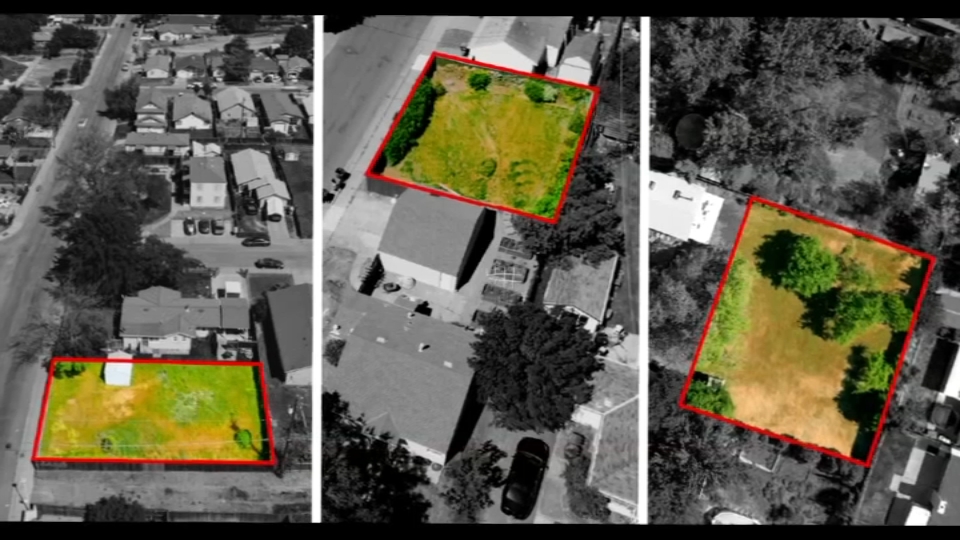A mountain lion was found dead in Oceanside after being hit by a car on Friday night around 7:25 p.m., just days after one was seen prowling the streets of downtown Oceanside, animal officials said.
It is not yet confirmed if the deceased mountain lion is the same one that was seen peering through the windows of a movie theater and trotting through Oceanside City Hall's parking garage earlier in the week.
The single-vehicle collision killed the mountain lion near North River Road and Wilshire in Oceanside. The driver was not injured, Oceanside police said. The California Department of Fish and Wildlife was contacted and arrived to examine the deceased animal.
The animal was a young male lion, likely a disperser, which is a young lion starting to become independent and in search of an area far from their home to establish as their own, according to the San Diego Humane Society.
Get a weekly recap of the latest San Francisco Bay Area housing news. Sign up for NBC Bay Area’s Housing Deconstructed newsletter.
At this time of year, it's common for young mountain lions to disperse and seek their own territory, so it's difficult to say if this was the same lion that had been reported in the area earlier in the week, the Humane Society adds.
"It's entirely possible [that this is the same mountain lion]," Tim Daly with the California Department of Fish and Wildlife said. Again, the department doesn't know for sure.
California
"If the original one resurfaces someplace in the downtown area of Oceanside [we] will respond and we continue to monitor," Daly told NBC 7.
If you see mountain lions, do NOT approach or disturb them, OPD and the Department of Fish & Wildlife says. Avoid the mountain lion and report the sighting to the OPD immediately by calling 760-435-4911.
A human wildlife conflict specialist weighs in
As their name states, mountain lions prefer the mountains and it's very unusual to see them in city streets like Oceanside. They prefer some dense vegetation for cover, which they find in the coastal sage scrub of Southern California, according to Megan Senour, Human Wildlife Conflict Specialist at the California Department of Fish & Wildlife.
Senour thinks this mountain lion ended up in downtown Oceanside through "wildlife corridors." Wildlife doesn't see property boundaries the way humans do, Senour added.
"So they use what we call wildlife corridors. So nice green spaces, drainages, anything like that. That's the kind of path of least resistance, and they'll use those to travel along, find resources, all things like that. And so that's likely what this animal used to kind of access that more urban downtown area," Senour told NBC 7.
Human contact with mountain lions are very uncommon, Senour said.
"Those interactions are incredibly rare, but certainly there are things that we can do as members of the public when we live and recreate in mountain lion country. Half of the state is considered mountain lion habitat," Senour said.
What to do if you encounter a mountain lion
If you're going to be moving around, such as hiking or camping in mountain lion country, Senour suggests going with another person or in a group, make noise, talk, or play music to avoid a surprise interaction, which is usually when those interactions occur.
"A lot of folks recreate in mountain lion country without incidents. So it really is — to emphasize — it's incredibly rare for there to be even an interaction in general. Mountain lions want to avoid us just as much as we want to avoid them. They don't want to see us — the weird two legged hairless creatures walking around. We're just as odd for them as they are for us for seeing them," Senour said.
Most mountain lion interactions do tend to involve pets or small animals, according to Senour.
Make sure you're not letting your pets into the backyard by themselves and are closely monitoring them, keeping them on leashes and indoors whenever possible, she said.
"We typically have rule of thumb for leash walking is nothing that's longer than 6ft and it's non retractable," she said.
Mountain lions can cover 10 to 12 miles a day
Mountain lions have a huge range, says Andy Blue with the Ramona Wildlife Center.
"They can cover 10 to 12 miles a day, and their range is actually about 100 square miles. So if they're seeing cats fairly close to the urban areas, that's probably a cat that is also on Camp Pendleton and Fallbrook and some of these other more open, wooded areas. But it is unusual to see them in an area with a lot of people and in neighborhoods, certainly," Blue said.
Does it seem like more wildlife are heading into town lately? It might just be modern technology.
"One thing we're seeing more of here with Project Wildlife is there's quite a bit more wildlife being seen with the addition of a lot of people have Ring cameras and setups like that around their house. And so we're seeing a lot more wildlife that we haven't seen in the past, and they've probably been in these areas all along, and we just were never really were aware of it until you're seeing it on your camera in the middle of the night," Blue said.
Blue has a special warning for pet owners.
"First and foremost is if you don't feed your pets outside your dogs or cats, that's what attracts a lot of animals that some of the animals, like coyotes and mountain lions, prey on. So if you're putting out dog and cat food overnight and a raccoon is coming around, mountain lions will prey on raccoons or coyotes or rabbits or squirrels. So everything from dog and cat food to compost piles to bird feeders to bird fountains, all these things that attract wildlife to your home. It's nice to see the animals, but it's not fair to them because you're attracting them into an area where they may be predated," Blue added.



